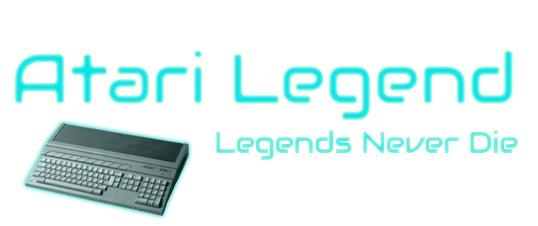

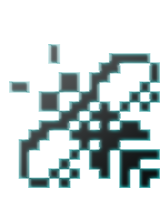





Deano is one of those names that will ring a bell amongst many Atari ST fans. He started with the release of the STOS Adventure Creator and games such as Mario's Quest. He got part of the STOSSER team with Tony Greenwood and became the editor of the magazine in the twilight years of its existence. Later he would join Tony Gooding to start the company Silly Software, with which he released some of the finest STOS games on the Atari ST. His work got into all the big Atari ST magazines. Read all about Deano's work and the history of STOSSER magazine in the following interview.
There is currently no profile available in our database
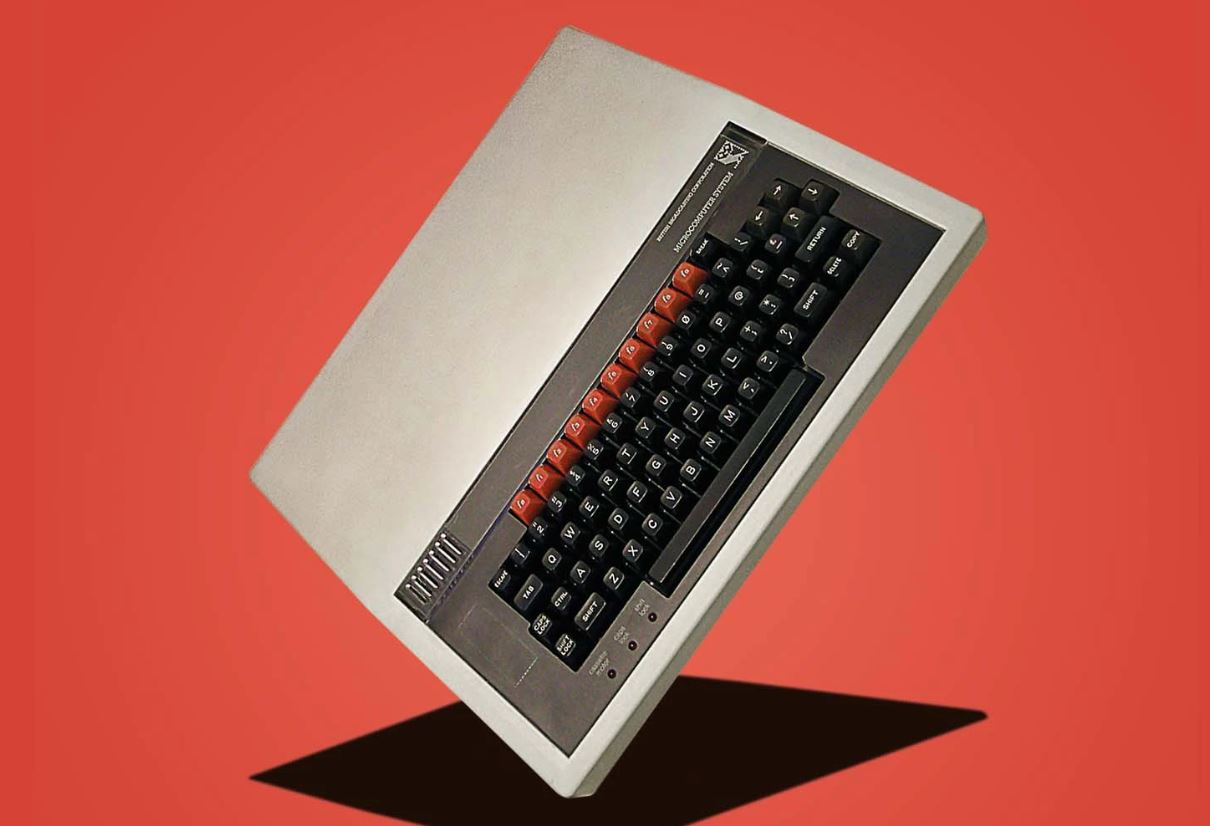
Deano first got in touch with computers at school, where he used the BBC micro. When asked why he was fascinated with programming he said "Probably the feeling of self-achievement. Being able to create something that I can share with the world."
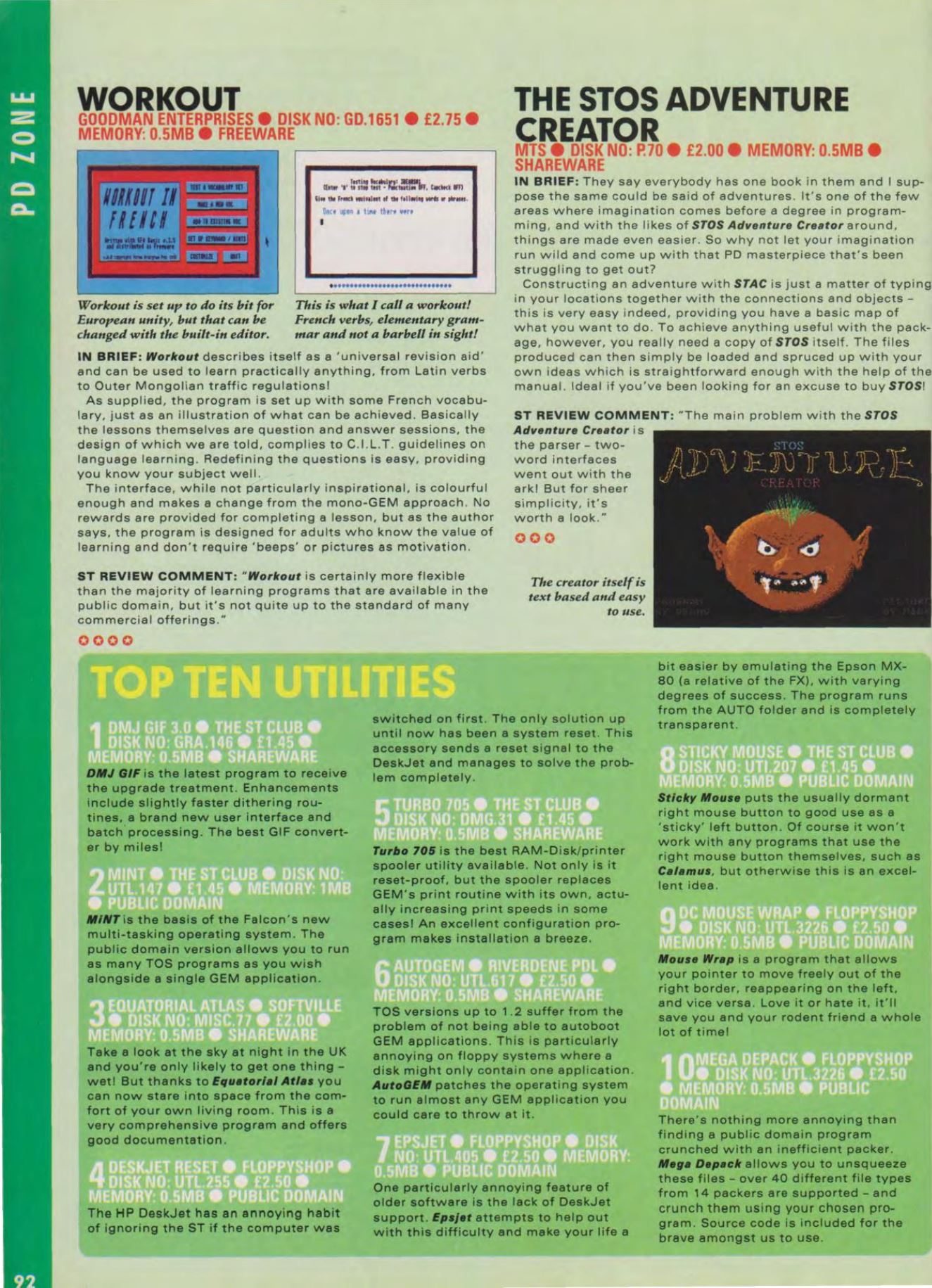
Before joining the STOSSER diskzine team, Deano already created numerous programs. His best known must be the STOS adventure creator, for easy text adventure creation. Here reviewed in the UK magazine ST Review issue 9 of January 1993.
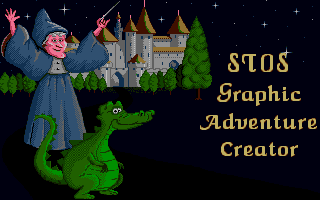
SAC got a follow-up, this time you were able to add graphics to your story in Deano's STOS Graphic adventure creator.
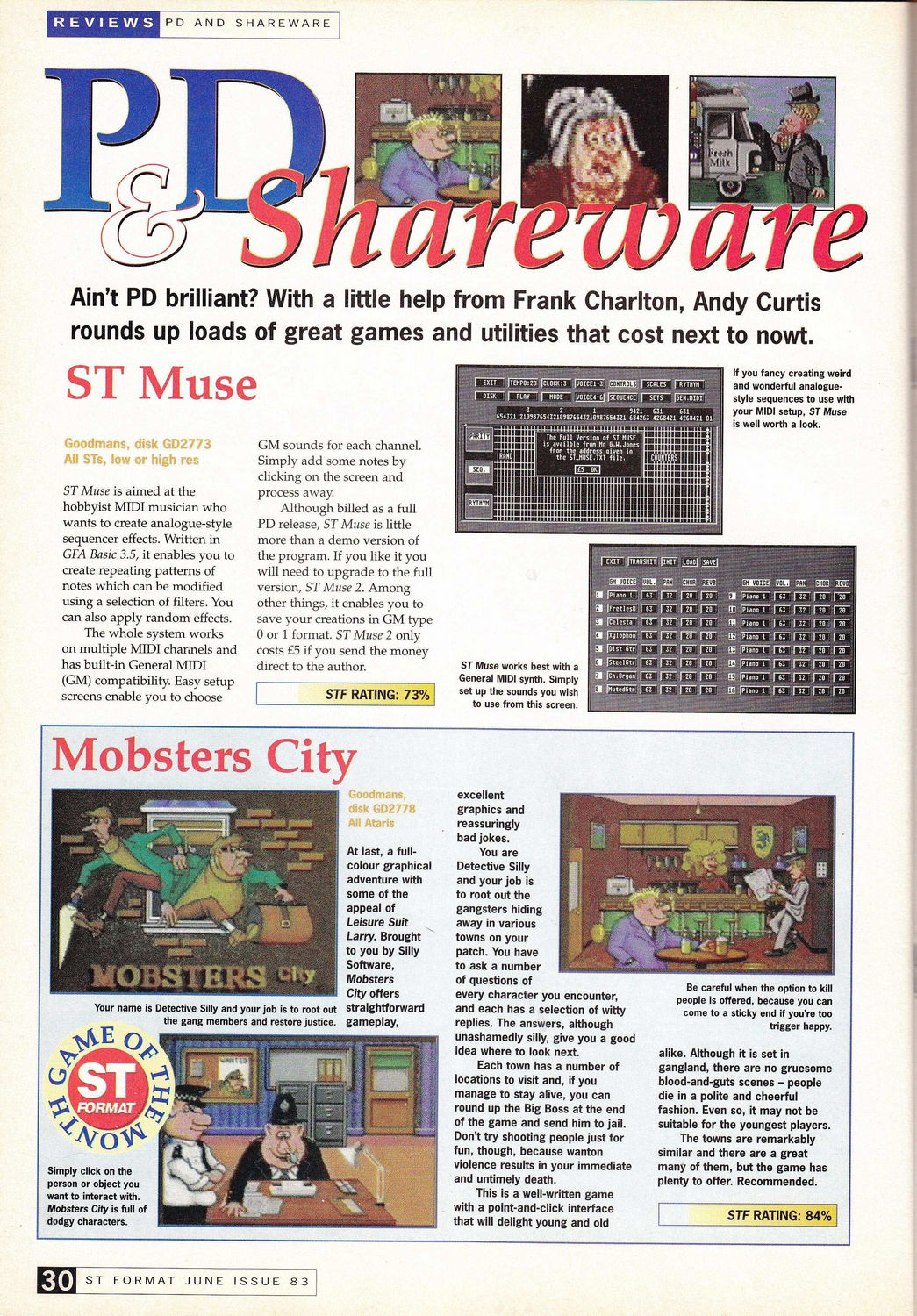
Mobsters City is one of Deano's favorite creations. This title even became 'Game of the Month' in ST Format magazine issue 83.
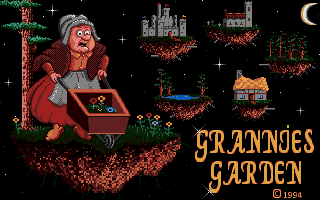
Together with graphics artist Tony Gooding, Deano started Silly Software. The duo released some of the most professional looking games in the PD scene. Grannies Garden is another prime example.
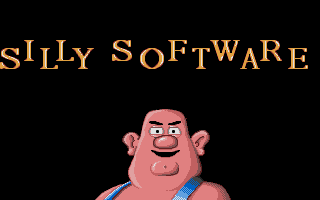
The animated Silly Software logo featured some fine speech sound effects. This is where we were instantly made aware of the quality that would follow. Deano choose this name for his love of silly humor ... like the Monty Python movies...
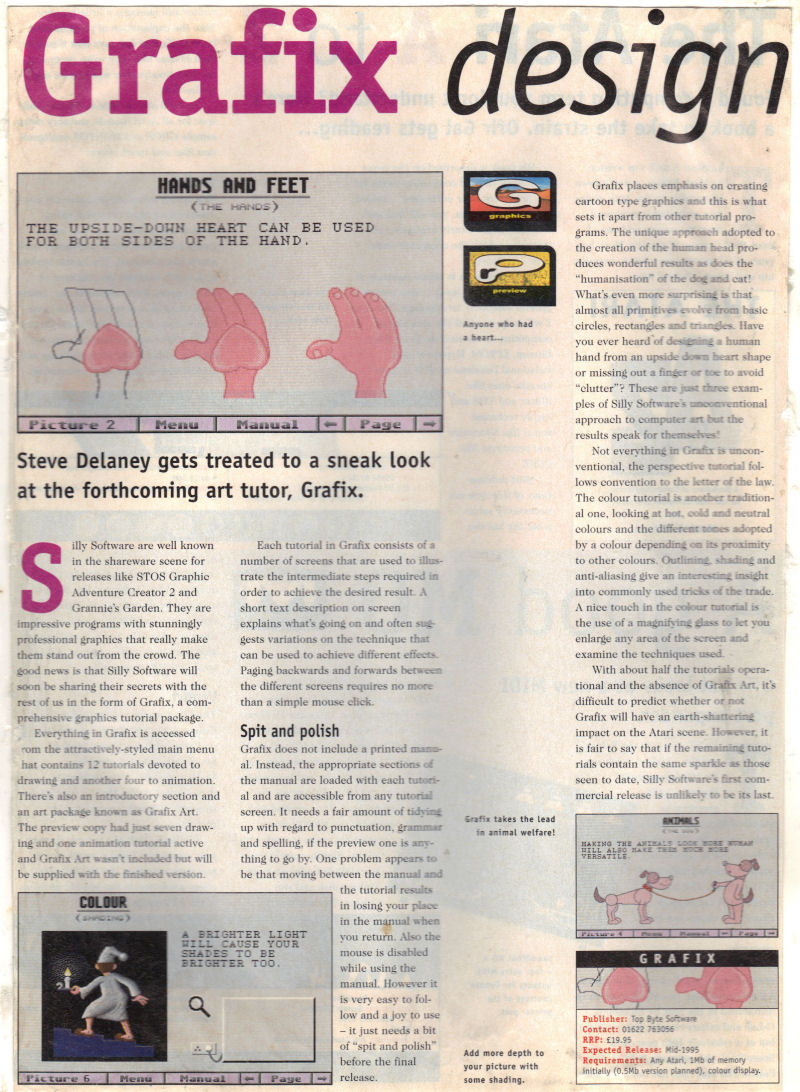
Tony Gooding (Tonesoft) was a talented artist and he wanted to teach the community with the release of the tutorial 'Grafix - The Easy Way' and the art package 'Grafix Art'.
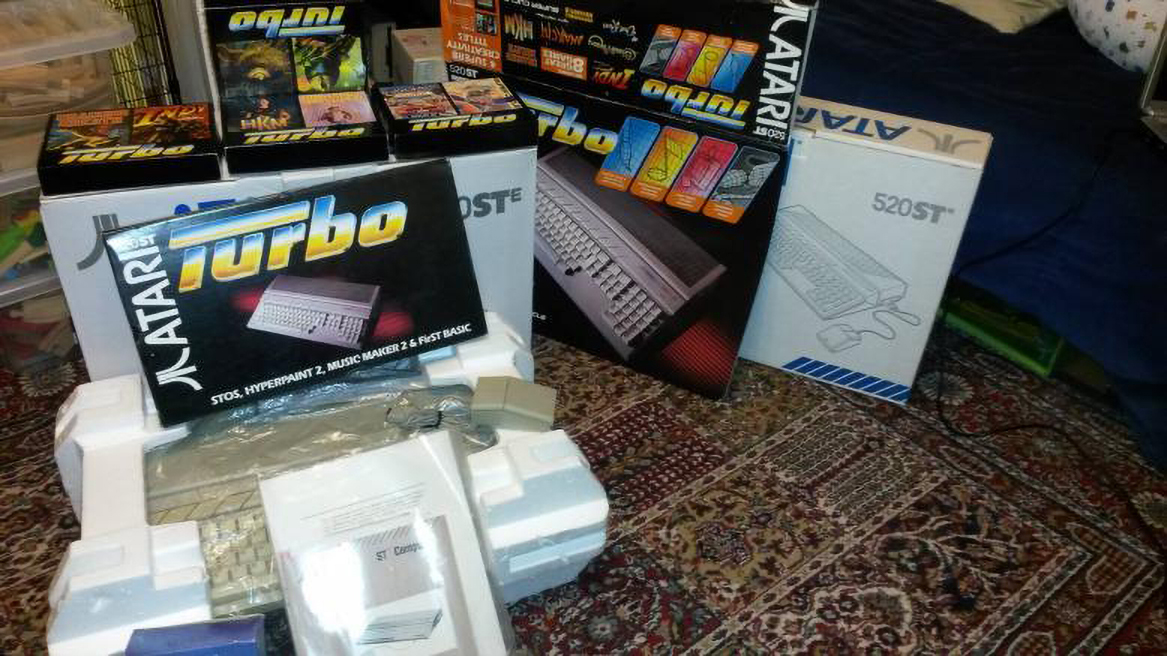
The Atari STe Turbo Pack contained STOS and Hyperpaint, everything an ambitious programmer like Deano needed to get started.
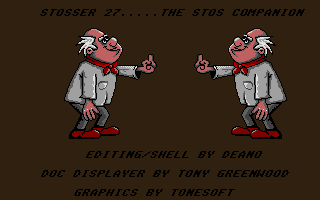
Deano became editor of STOSSER diskzine as of issue 24, and he programmed the shells from issues 27-29
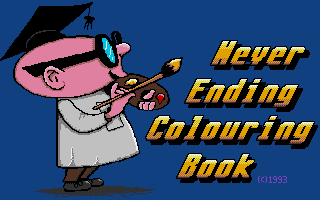
Deano also did work on other machines. He converted Tonesoft's 'The Never Ending Colouring Book' to the Amiga.
1) Hi Deano, can you introduce yourself to the Atari/Retro people who haven’t heard of you before?
Hi, my name is Dean Sharples, aka Deano. I have been using computers for 40 years starting with the BBC Micro then moving onto the ZX Spectrum, Atari ST, Amiga and PC. I had my first taste of programming on the BBC before moving on to the Spectrum where I got the programming bug. I started programming in STOS Basic in 1990 and Amos Pro on the Amiga around 1995. I have written many articles and tutorials for diskzines such as Stosser, Power, ST+ and ST Plus Fanzine. I am probably most known for Silly Software and for the STOS Adventure Creator.
2) Did you actually create the SAC? Was this allowed by Mandarin Software? Any idea if it was used a lot by the community?
Yes I created SAC. Mandarin Software don’t ask for permission to use STOS in a program title. SAC was for creating text adventures only, while the follow up STOS Graphic Adventure Creator (SGAC) was used to create Point and Click Graphic adventures. I have no idea of how many people actually used it and I never saw any games released with it, other than the ones I did with it.
3) On your website you mention the first computer you ever programmed was the BBC Micro at school. But why the fascination with programming?
Probably the feeling of self-achievement. Being able to create something that I can share with the world. I have seen my software on various emulation websites and I feel proud that I have achieved something that I can look back on. Having the power to create your own projects. Programming is quite addictive and I loved the challenge of getting an idea to work on the computer.
4) What period was this? The BBC Micro and the Spectrum, I guess first half of the 80’s?
My school got the BBC around 80-82. I got my first Spectrum (48k Plus with plastic keys) around 85-86.
5) At the beginning of the 90’s you moved to the ST and STOS Basic. Why the ST and why STOS?
I first saw a ST at a friend’s house where I was fascinated by the sound effects on a game called Barbarian. After seeing other games, I knew I had to have one. I remember coming home clutching my Atari STe in the back of my brother’s car and dreaming of the games I could program in STOS Basic which was included as part of the STe Power Pack. STOS promoted itself as being able to create commercial quality games in the BASIC language without the use of machine code. I have seen other languages such as GFA Basic but nothing compares to the power and ease of use of STOS.
6) Dean, is it possible you actually mean the 'Discovery Pack' instead of the 'Power Pack'? I think the 'Power Pack' came with First Basic by Hi-Soft.
Just checked online. It was actually the Turbo Pack. It came with STOS, Hyperpaint 2, STE Music Maker 2 and the games included Dragons Breath and Indiana Jones and the Last Crusade.
7) You also programmed the Amiga. Which machine do you prefer working on and why?
Amos Pro on the Amiga is definitely better than STOS as there is a lot more you can do with it. However, the Amiga is not as user friendly, so I prefer working on the ST.
8) You have created quite a bit of games using the Silly Software label. Can you tell us a bit about the history of Silly Software? When did it start exactly? And why the name Silly Software?
I’ve always loved silly humour such as Monty Python so I thought of creating games with a bit of silly humour in them. Silly Software was formed in 1993 and our first game, Mobsters City, was released in 1994. The name was just something that popped in my head one day. We released games as licenseware before our first commercial release, Grafix the Easy Way, was released under IDS. Our last game was Percy Peanut which was never finished as my artist partner (Tony Gooding) didn’t want to carry on.
9) In regards of Grafix, when looking at the link over at Atari Mania, we see it is actually published by Top Byte Software, and not IDS – Was this release also affected by the demise of IDS and Vic Wright? I’m asking because Tony Greenwood had a bad experience with the release of H.E.R.O, when IDS went overboard and was taken over by AWF. But I interviewed Robin Ball last year who did the graphics for the game Alien Thing. This game was also to be released by IDS but when it went overboard, it was taken over by Top Byte. Anyway, do such stories ring a bell to you when thinking about the release of Grafix? And do you know Vic Wright, the man behind IDS?
Grafix was originally released through IDS which was owned by Vic Wright. However Vic signed IDS over to Andy Fern of AWF who everyone started calling a conman. We managed to get the copyright of Grafix back from him and then released it through Top Byte Software. When that didn’t work out we released it through Goodman’s International. Sadly, it didn’t sell well. So yes I heard all about the problems people were having with AWF so we pulled out. If Vic had remained then IDS would have probably been the distributors of Grafix.
I never actually met Vic Wright but we did speak on the phone and found him to be dedicated to the ST and STOS. He released the ST Handbook which I would love to get hold of again.
10) Finally, Percy Peanut, is there anything left of this game?
Sadly, all that existed of Percy peanut was the STOS source and a playable level. Unless I passed it onto a contact, I think it’s probably gone forever.
11) Your games featured some really good graphics. These were done by Tonesoft? Who is that? And how this did relationship start?
Tonesoft is Tony Gooding. He worked with Tony Greenwood on the ST version of Never Ending Colouring Book and also contributed graphics to STOSSER diskzine. As graphics were never my strong point, Tony Greenwood suggested I contact Tony Gooding and ask him if he would like to work on some games with me. He agreed and we started work on Mobster’s City. We never actually met as he was 400 miles away but we communicated by post and phone.
12) Have you any idea which tools Tony used to create the graphics for your games?
Tony created his graphics using the Canvas art package. He also used Grafix Art which is the art package I programmed to go with Grafix The Easy Way.
13) What game are you most proud of making?
Probably Mobster's City as it was inspired by one of my favourite Spectrum games – The Wild Bunch. The pontoon subgame was a bit of a challenge and I am pleased with how it turned out. It also gives me the opportunity to go wild with my silly humour by giving the characters funny dialogue. I got a lot of positive reviews in the ST magazines which I still like to read – except for the nasty 3% score I got from one mean ST Format reviewer who, at the time, was slating every ST game he reviewed.
14) Why your fascination with (text) adventure games?
I played a lot of them on the Spectrum and was fascinated with the idea of exploring worlds using the power of descriptive text. As I was never good at artwork, text adventure games were an ideal choice to start with as I could focus on creating the game world using the power of words and let the player form their own images of it.
15) I believe you were one of the core members of the STOSSER disk magazine. How did that start exactly? At one point, you took over the magazine, correct? Have you ever met the founder Tony Greenwood? Can you tell us a bit about your STOSSER days?
I received a letter from Steve Gooding (Tony Gooding's brother) who was the original editor. He registered his copy of the STOS Adventure Creator and told me about STOSSER. At this time it was up to issue three. He sent me a couple of issues and I started contributing to it. Tony Greenwood started writing to me as a STOS contact and sent me STOSSER every month. He invited me over to his home when he realised I was only half an hour drive from him. We became good friends and I would visit him regularly. He gave me a lot of help with my programming and supplied me with lots of ST goodies over the years. When Bob Goodfellow, the current editor of STOSSER, quit, Tony asked me if I would like to take over. So from issue 24 onwards I was the editor with Tony making the shells. Later on I started programming the shells from issues 27-29. I contributed articles and code regularly and ended the magazine after issue 29 when the contributions dried up and I was more or less doing everything.
16) Am I correct in saying that Tony Gooding was also part of the STOSSER family, as his brother Steve was the original editor of the mag? Are you still in touch with any of them?
I’m not sure what graphics Tonesoft did for STOSSER other than the music player in issue 5. I am also not sure if he was part of the team. Tony Greenwood might know more. Steve vanished without trace and no one in the STOSSER team ever heard from him again. He sent Tony Greenwood a disk with submissions for STOSSER with a short note that said “Right, I’m off”. He sent another disk later with no letter and that was the last we heard of him. Tony Gooding sent me a letter saying he was not going to create any more graphics for Silly Software and that was the last I heard from him till recently when he sent me an email to say hello when he saw his graphics online. So I am no longer in contact with any of them.
17) You programmed the Amiga version of the Never Ending Coloring Book (ST version was done by Tony). This was one of the bigger projects, I think. It was featured on an ST Format cover disk. And was developed by Tonesoft. Can you tell a bit more about this project?
Never Ending Colouring Book was Tonesoft’s game idea and he enlisted Tony Greenwood to program it. ST Format did put it on their coverdisk without asking permission so neither Tony knew about it till the magazine was released. I don’t know any of the background of the game as Tony programmed it but I do know that I asked Tony if I could create an Amiga version of it and he agreed. I also created an Amiga version of his game "Spot It".
18) You mean Spot the Difference?
Yes, I remember Tony calling it Spot It originally.
19) You worked on one STOSSER Software game called Thinker. The game was never finished/released. What happened? And would you ever finish it?
Tony was working on other stuff at the time so lost interest in finishing Thinker and offered it to me. Most of the coding was done and it was just a case of adding levels and a title screen. I did finish it but for some reason never released it. I have been looking for the game since in the hope that someone out there was given a copy before I sold my ST.
20) Today, you still seem very active in the scene. You’re are part of the STOS Facebook group and just started a new YouTube channel. What is your plan? Why are you still fascinated to this day with STOS?
Although I haven’t done anything with STOS for years, I still treasure the memories and all the people I shared software with. My YouTube channel is dedicated to sharing those precious memories with the retro world. I joined the group after a request from the owner Michael Keenleyside and have enjoyed sharing memories with other STOS users. So my plan is to keep those memories alive, even if I never do anything more with STOS.
21) Are you a gamer? Do you like to play computer games as well? And if so, what is your favorite classic and new game?
I love games. I have emulators for every system I have ever used and I play lots of classic games that I remember from my youth. The only modern game I play is Township and I have many favourite classic games such as Donkey Kong, Strider, Mr Do, Crime City and many more.
22) What are you up to these days? What do you do for a living?
My quest for working from home was never completed. Currently I work at Toolstation as a picker through an employment agency. I spend a lot of time watching older 70s and 80s films and TV Shows and playing games from the Spectrum to PC. I am planning to start programming again with AOZ Studio when it is finally released as it is the nearest language to STOS and Amos.
23) Final question I always like to ask … If you could have a drink with anyone, dead or alive, who would it be and what would you ask?
It would be nice to meet up with Tony Greenwood again and talk about the old days. I would have liked to meet up with some of the contacts I had in Stosser.
Thank you Deano.
For even more info about Deano's work, check out his website.
If you missed the full documentary, check out the video on YouTube.
August 5, 2025 by grams88
Martin Brownlow is a living legend. Best known among ST fans for creating the beloved PD/shareware classics Grav and Grav 2, his games are still cherished by many to this day. From a young age, Martin knew he wanted to make games for a living...and he made that dream a reality. In fact, he’s still doing it today. Discover the full story and much more in this exciting new interview.
October 4, 2024 by grams88
Stacey Jamieson began his career at DMA Design, working on titles such as Oh No! More Lemmings, Walker, GTA and others. Over the years, he moved on to Electronic Arts (EA), where he contributed to major games like the Star Wars Battlefront series, Mass Effect, and Need for Speed. Today, he is the co-founder of Expression Games, where he continues to pursue his passion for game development. What an exciting career!
July 29, 2024 by grams88
Who doesn't love a good underdog story? Chris Sharp is a noteworthy apprentice of the renowned François Lionet, as he mastered the art of coding with the almighty STOS Basic. Chris crafted a few games for our cherished ST, including fan favourites like Magic Tomb and the Freaked Out series. Intrigued? Dive into our interview to revisit the era when game development could still be a solo endeavour.
July 16, 2024 by grams88
When Sega released its Master System, it came bundled with the game Alex Kid. To this day the game remains very popular, loved by many. One of those people is Terry Lloyd. More so, Alex Kid was the main inspiration for the Atari ST platform classic Axel's Magic Hammer. But that is just one of his many accomplishments. Terry has been around the block. Working as an artist and game designer at the beginning of the 80's for Gremlin Graphics, he then moved on to Core Design, which he helped get off the ground. During the 90's he contributed to founding the company Malibu Interactive. On the Atari ST, Terry's resumé include Dynamite Dux, Car-Vup, Rick Dangerous 1 & 2, Torvak the Warrior, WarZone and many more. Read all about this veteran of the games industry in this exciting interview.
April 18, 2024 by grams88
It doesn't always have to be about computers, coding and graphics. Adrian Powell, the artist behind the original Lemmings game, crafted all its artwork, including box art and promotional materials. His passion for painting lemmings has persisted over time and he is still painting lemmings to this day. Powell's work remains influential and has helped selling millions of copies of this classic (ST) game.
Currently 0 registered users online
In the past 24h there were 5 registered users online